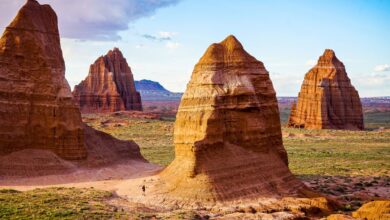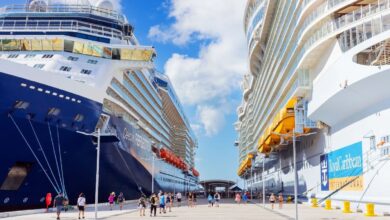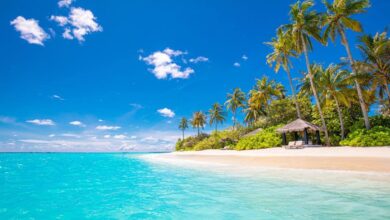Cancun Sargassum Seaweed Area DAILY 2024 Updates and MAP

By 2024, the seaweed season in the Cancun region is in full swing and sargassum is invading beaches all along Mexico’s Caribbean coast.
Beaches most affected by high concentrations of algae are Cozumel, Playa del Carmen, Tulum, Sian Ka’an and certain areas between Cancun and Puerto Morelos.
However, it is extremely difficult to accurately predict which beaches will be affected and to what extent, as conditions change almost daily and often without notice.
Read on for the latest information on the sargassum situation on Mexico’s beaches.
Sargassum Seaweed Cancun Now (July 15 Update)
Sargassum seaweed levels were low around Cancun’s hotel zone during the first two weeks of July 2024. Forecasts suggest that these levels will remain the same and Cancun vacationers will enjoy them sargassum-free summer.
Mexican Caribbean Coast Sargassum Seaweed Map
According to the latest seaweed distribution map from the Quintana Roo monitoring network, the situation improved on most beaches in the Mexican Caribbean. 92 out of 100.



Latest distribution of sargassum seaweed in the Atlantic Ocean and Caribbean Sea

Remark: The situation changes every day in unpredictable ways, so you consider this information as an estimate. You can count on Isla Contoy and Isla Mujeres as clean destinations. As for Cancun, seaweed levels are low, but depending on the currents this can change from day to day.
Latest photo updates from Cancun seaweed (July):


Latest Photo Updates from Cancun Seaweed (June):




Cancun video seaweed report (by Traveling Lifestyle) – May 15, 2024
The walk was recorded between Playa Marlin and Playa Caracol on MAY 22 at Playa Delfines, passing famous resorts:
- Hotel Riu Palace Kukulkan
- Live Agua Resort
- Westin Lagunamar Ocean Resort
- Park Royal Beach Resort
- Armar Resort (Scary abandoned resort, read the story behind it)
- Beach Palace Cancun
- Hotel Flamingo Cancun
- Hyatt Zilara
- Wyndham Alltra Resort
- LeBlanc SPA resort
- Royalton Cancun Hotel
Live beach webcams from Cancun Resorts
Daily seaweed updates and beach photos (Tulum, Playa del Carmen, Isla Mujeres, etc.):
July 2024: After Hurricane Beryl, Cancun experiences a layer of sargassum seaweed, but other parts of the Mexican Caribbean coast continue to experience arrivals




May 22 – June 7


This photo below, taken in front of the Viva Wyndham Maya Resort, Playacar on June 4, shows the rapid increase of Sargassum seaweed in Playacar. This popular part of the Mexican Caribbean has never seen such a large amount of seaweed in 2024.

May 8 – May 22
From the latest photo and forecast updates we can say that the seaweed situation has been better over the past two weeks, but this is about to change at the end of May.



May 2 – May 7
Viral videos from various parts of the Mexican Caribbean are circulating the internet and continue to impact tourism as the sargassum season slowly begins to reach its peak in the region.
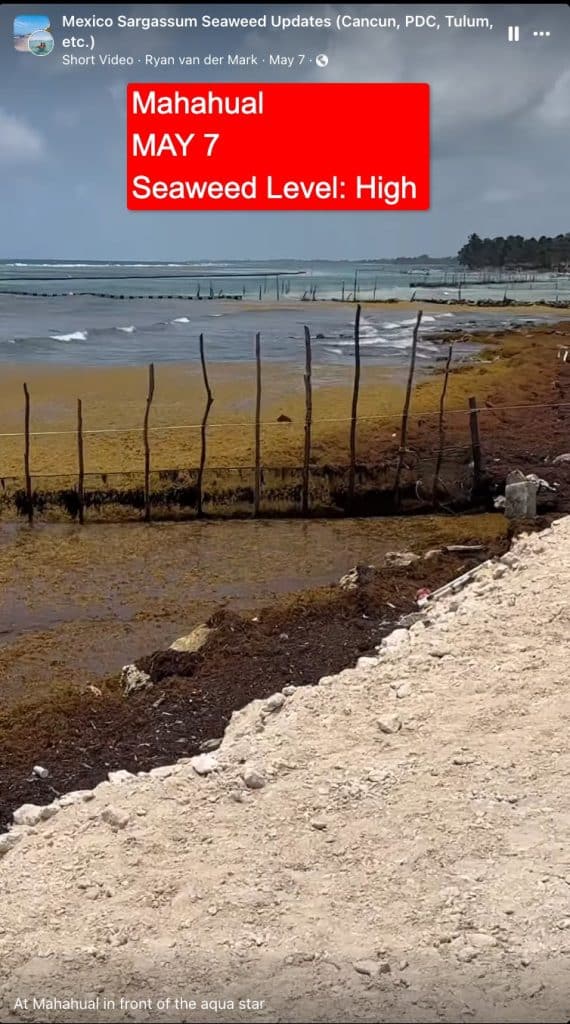
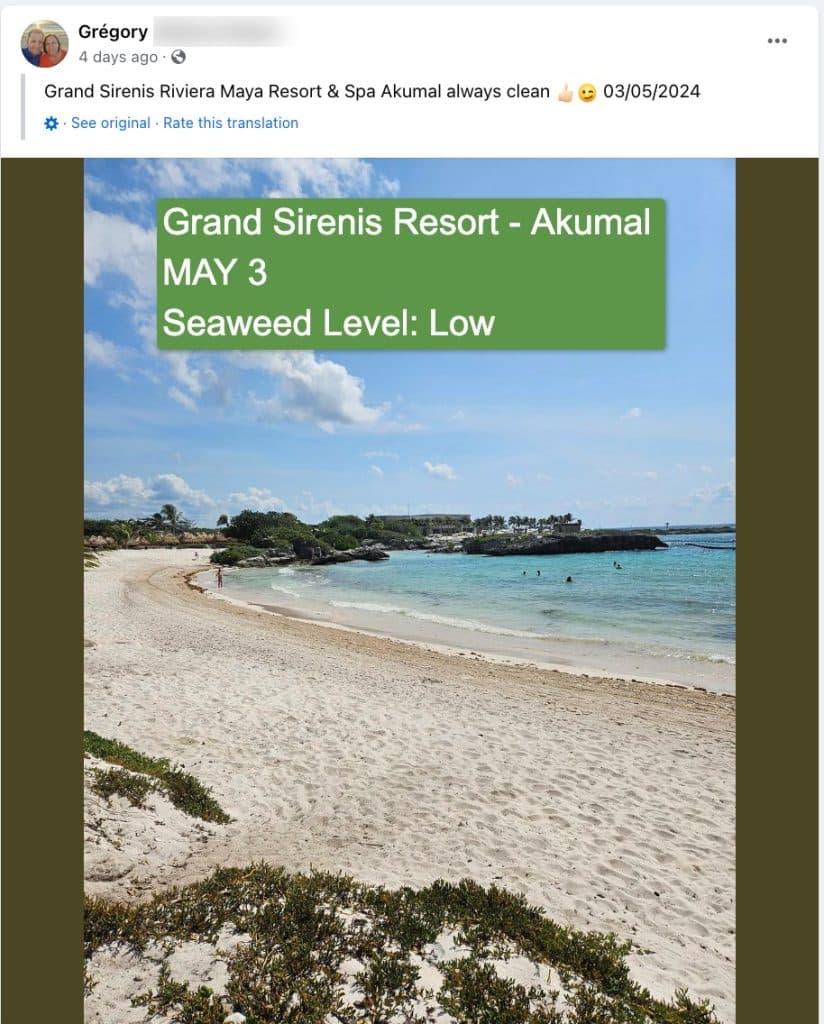
Playacar MAY 3 – Video report from the walk for popular resorts (RIU Palace, Reef Hotel, Iberostar Playacar, Viva by Wyndham, etc.)
April 30 – May 1
The situation in Playa del Carmen has gotten out of hand on some beaches. The cleaning crew has difficulty keeping up with the constant (24-hour) supply of seaweed.
Here are some latest seaweed photo updates from Holbox, PDC, Tulum and Puerto Aventuras:
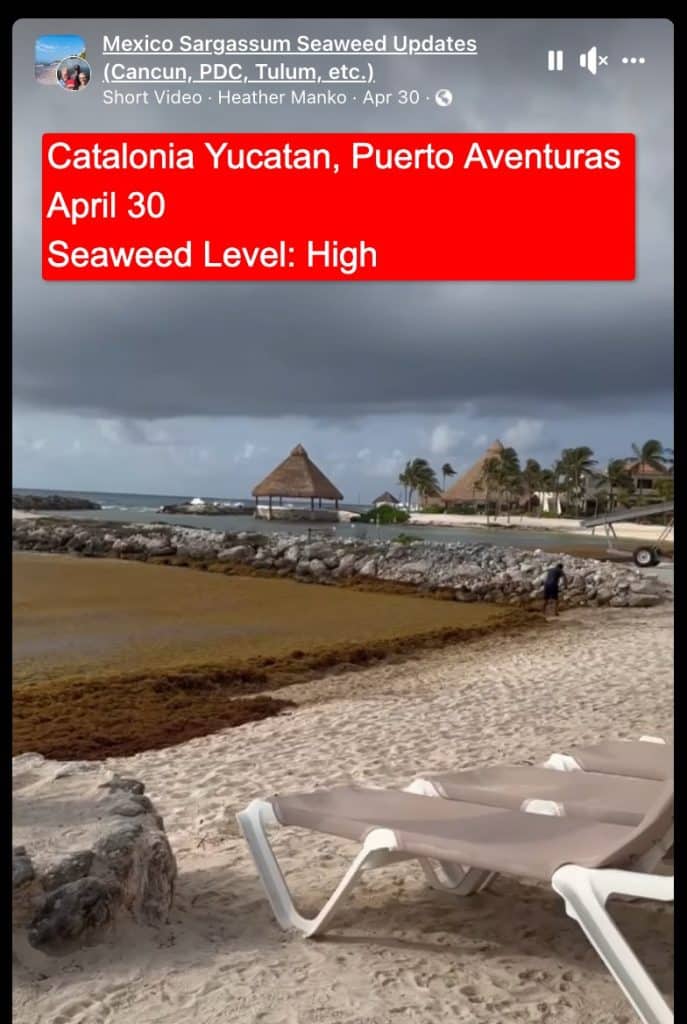
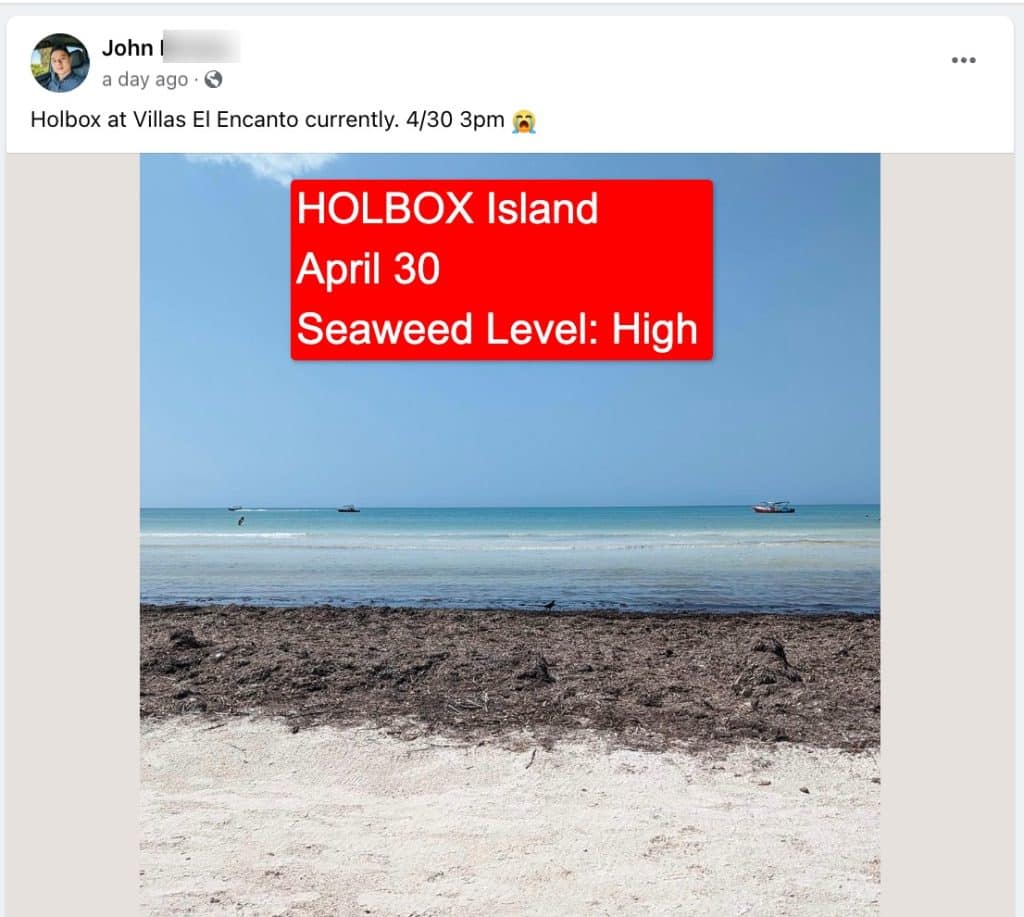
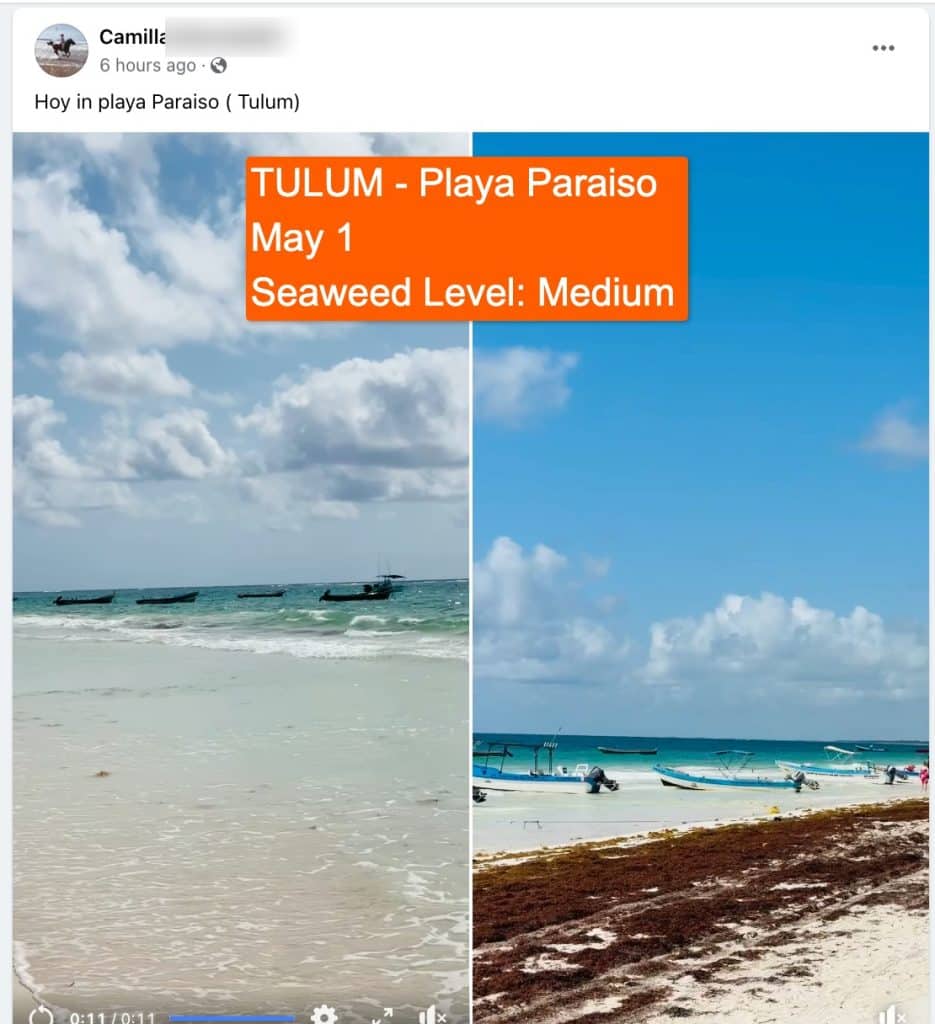
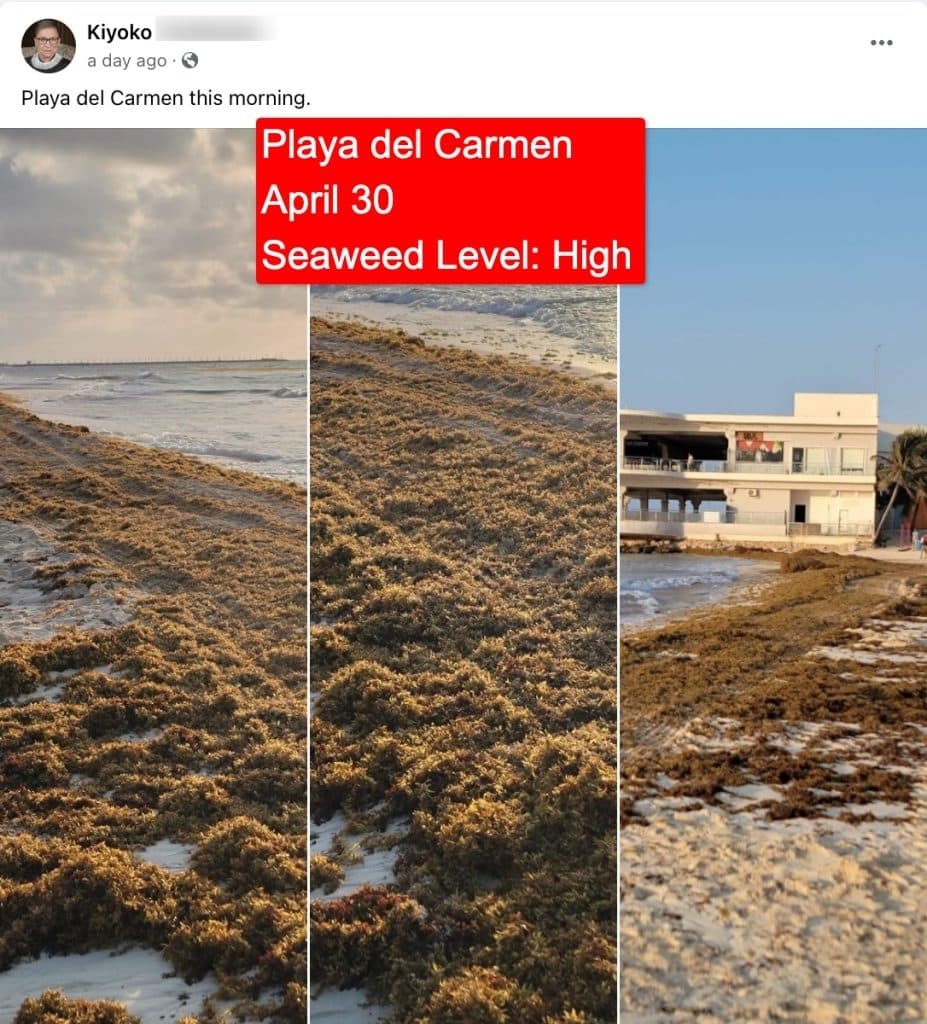
April 24 – 29
Latest photo updates from Puerto Morels and Playa del Carmen
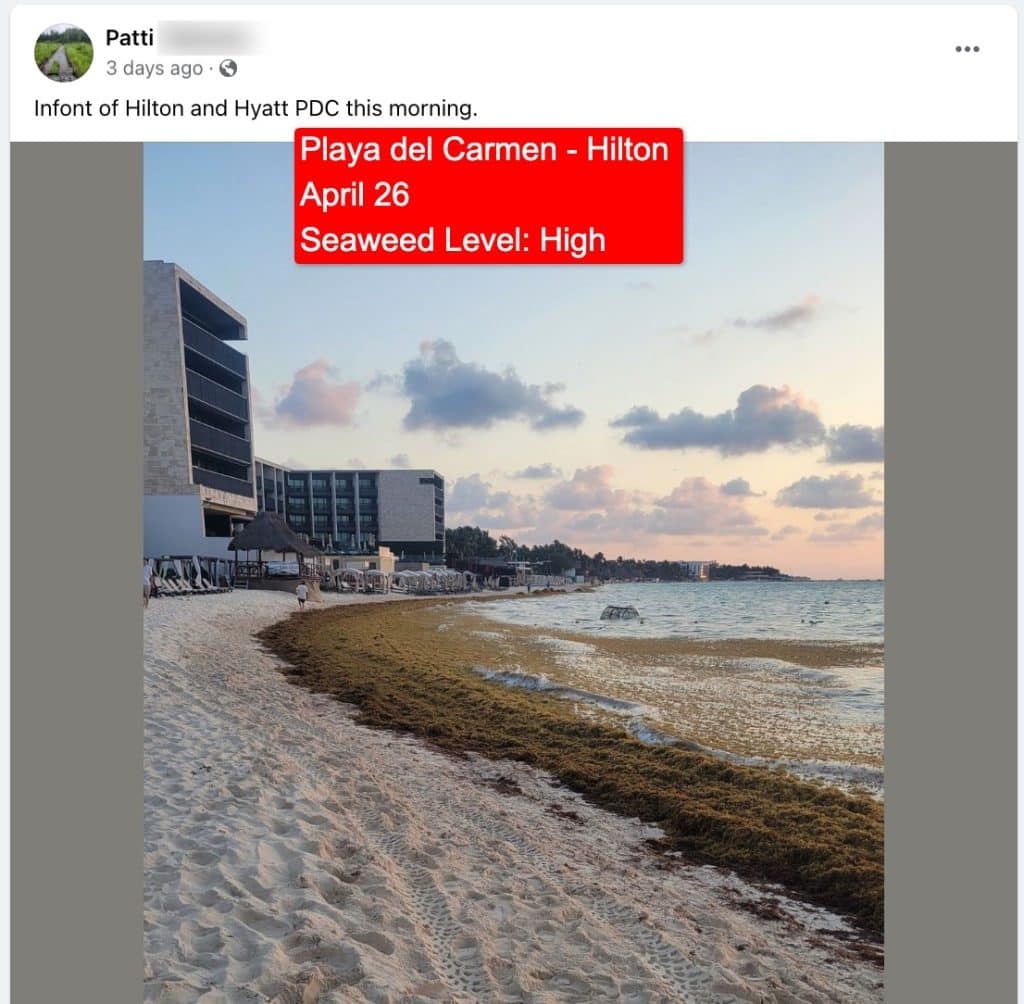
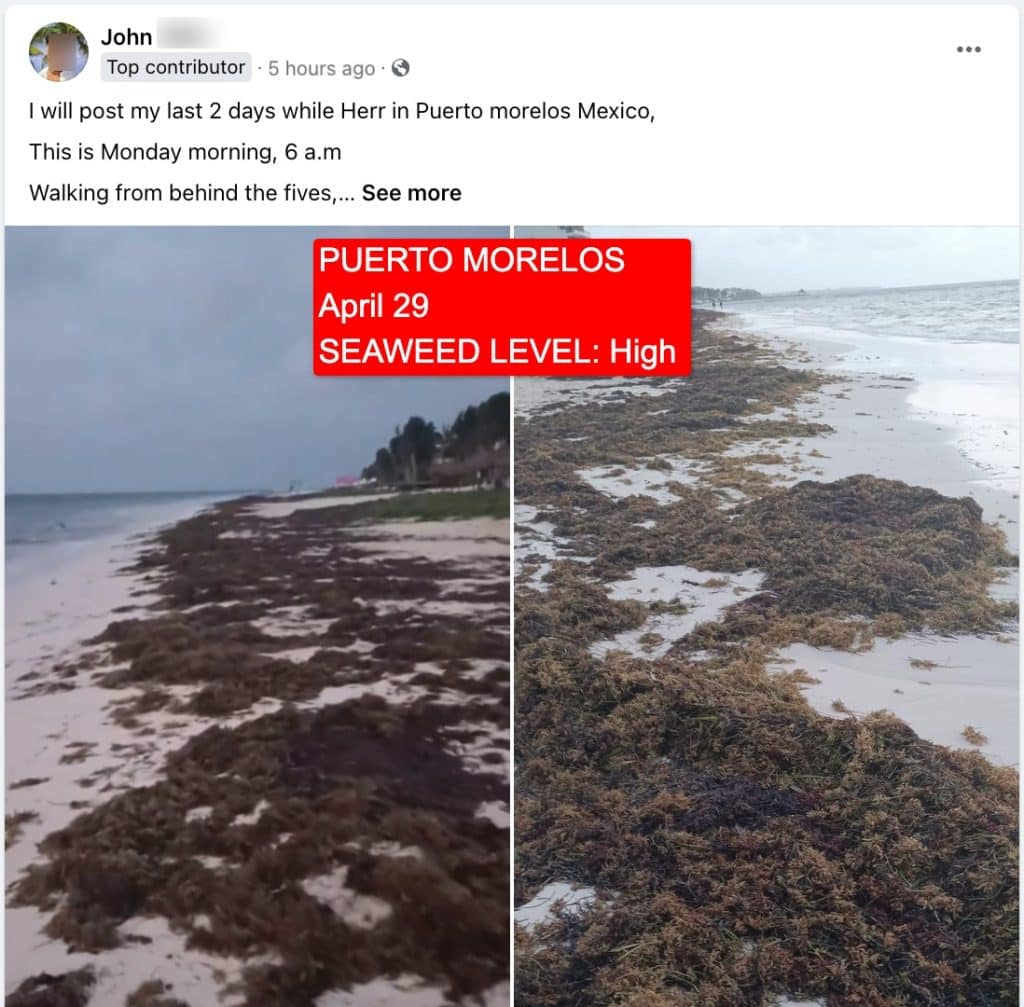
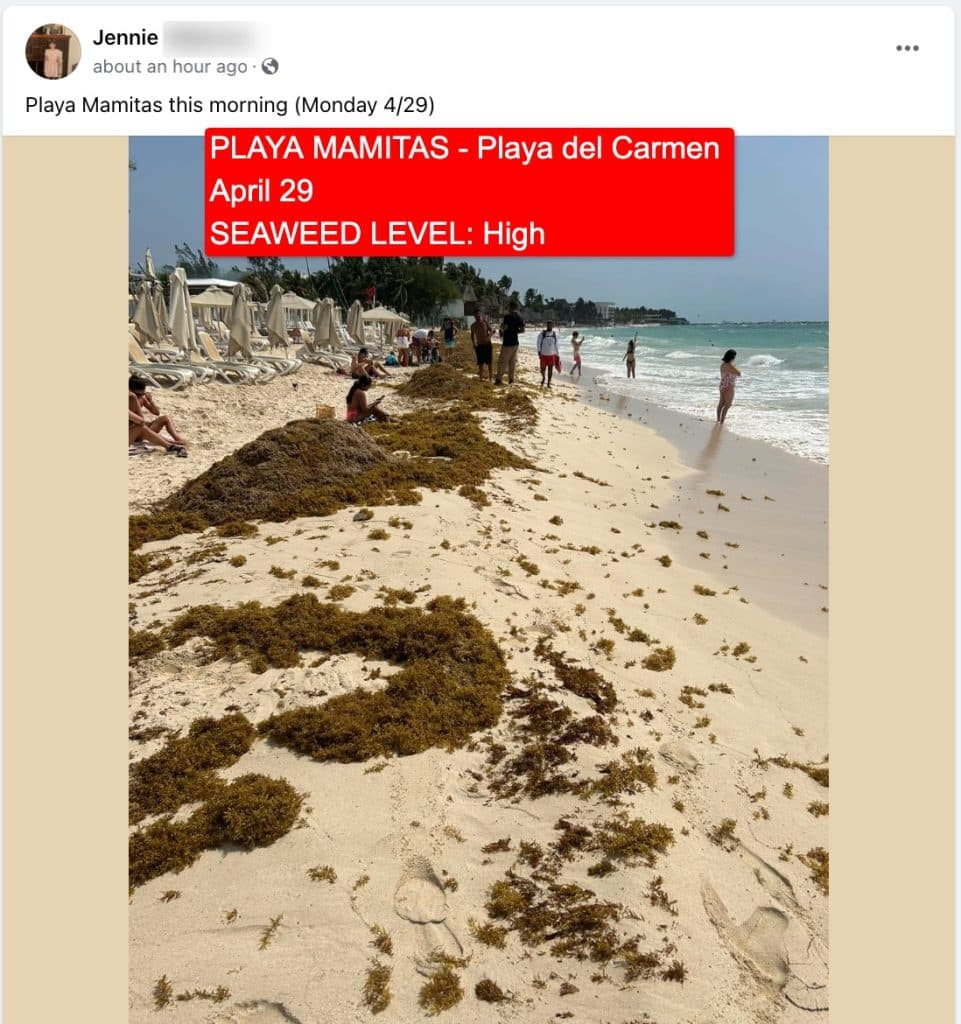
April 22 – 23
Tankah Bay and Paradius
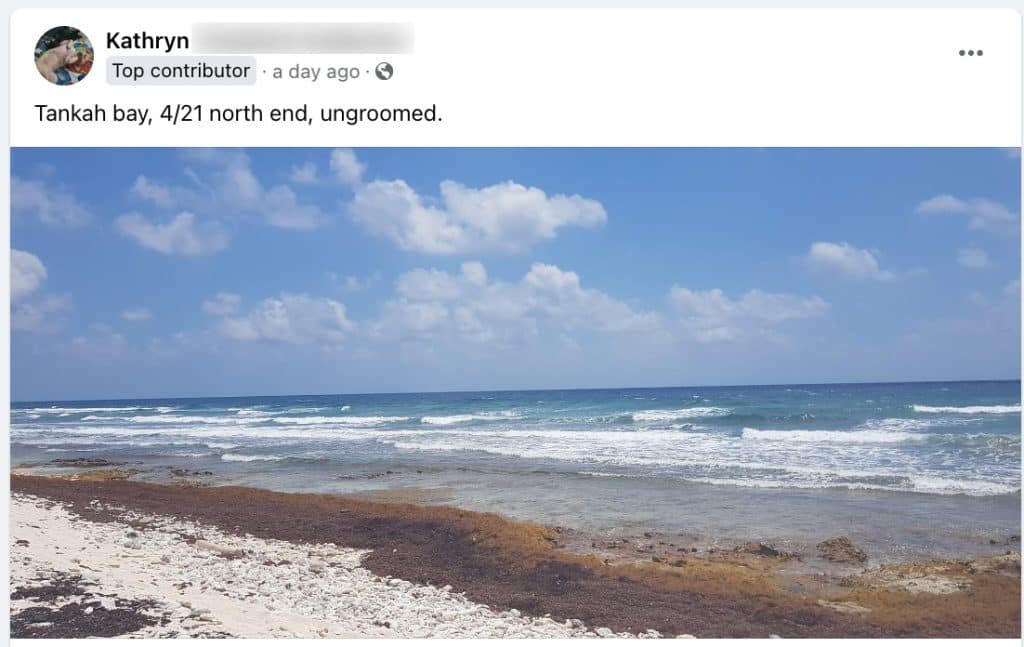
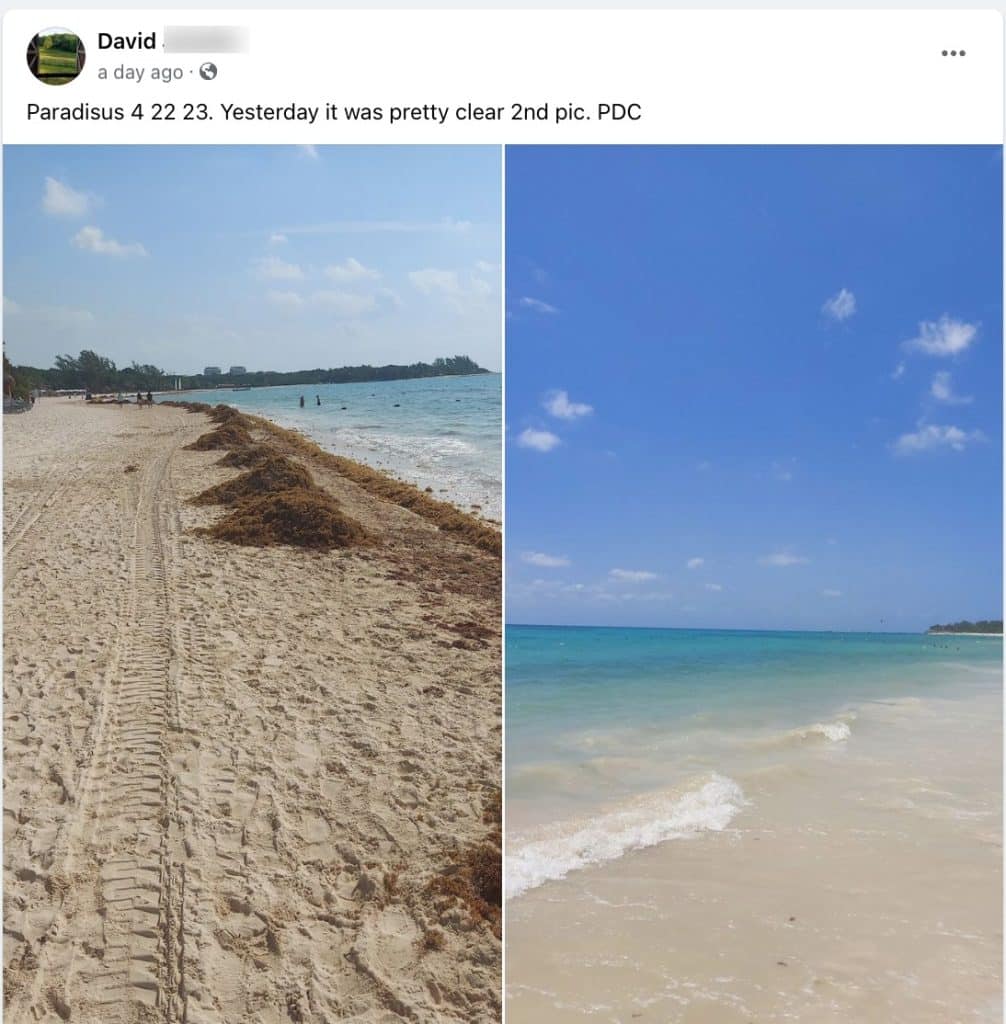
Playa Caracol, the cleanest beach in Cancunzero seaweed – April 22, 2024
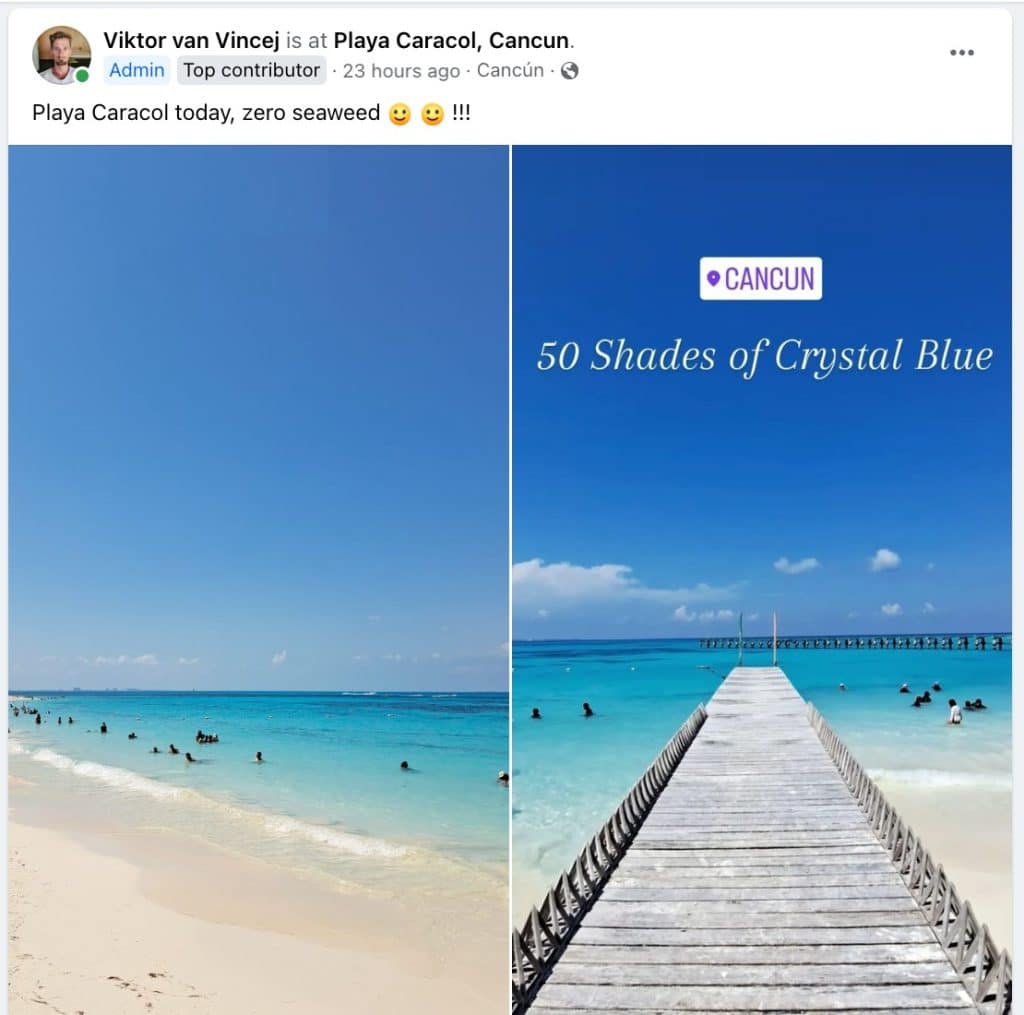
April 20 – 21
Sarah G. said in her FB report: “Today in Tulum. Sargassum is here. But they are doing a good job with mitigation. It’s different everywhere but not really watery or smelly either. No complaints.”
“The worst photo is La Zebra. The other two are equidistant in both directions. To enjoy.” she continued.
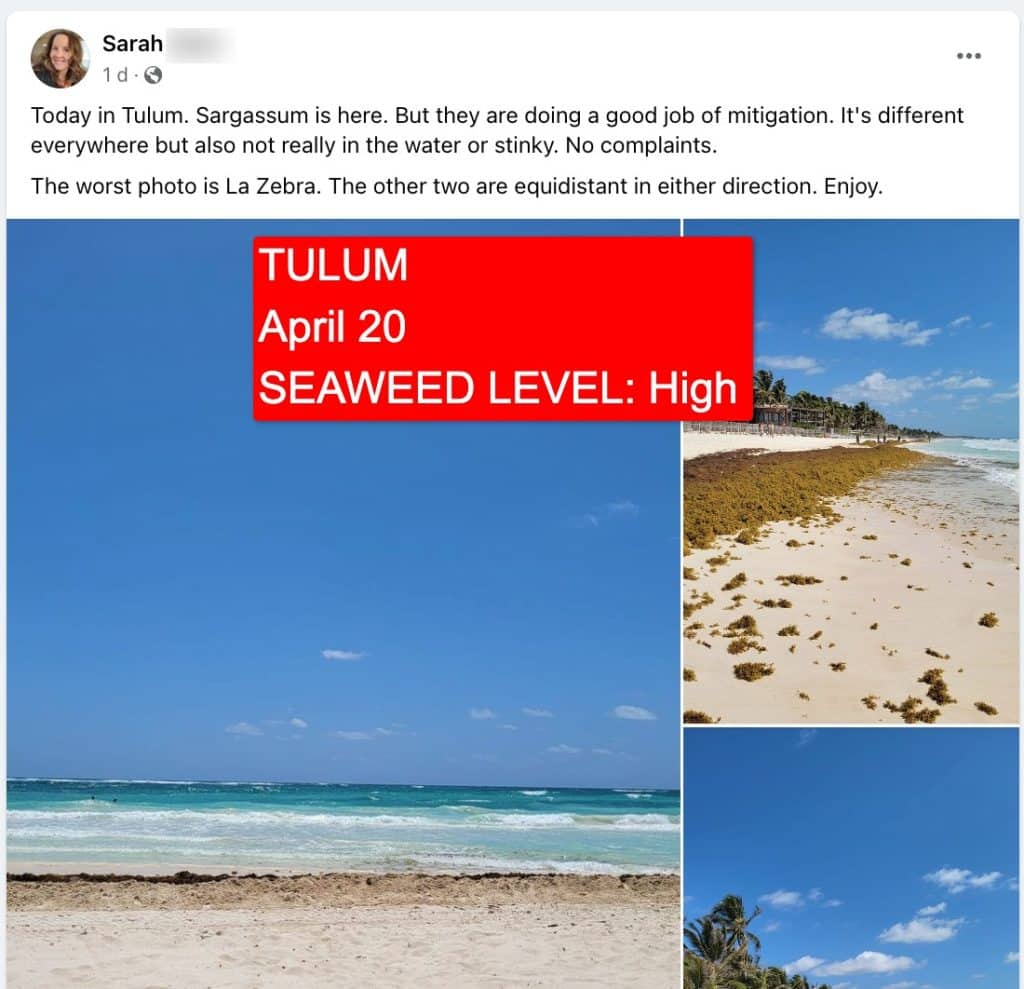
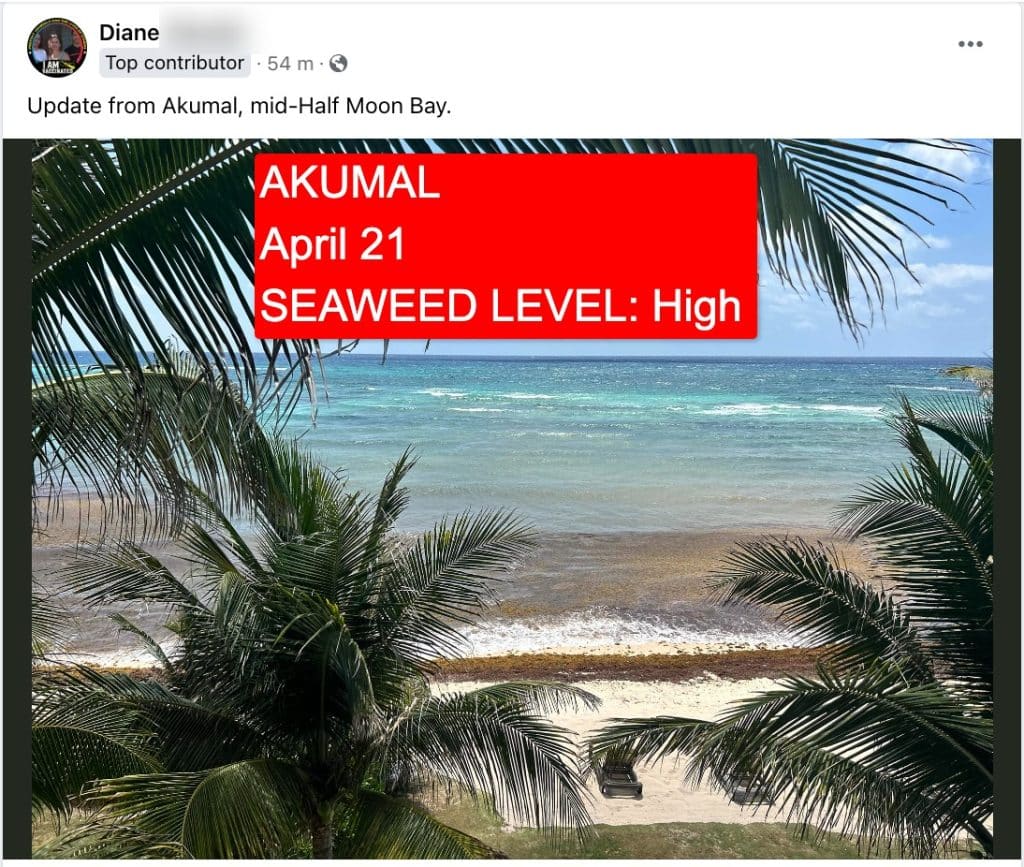
April 17 – 19
Latest news, photos and video of the recent seaweed arrival
Sargassum seaweed alert in Cancun and the Mexican Caribbean was first mooted by local officials in 2024.
The arrival of the sargassum continues as predicted. According to photos submitted to our FB reporting group and information from our journalist in the area, the situation is at its worst in 2024.
This increase in sargassum is prompting the Mexican Navy to install more barriers along the Cancun and other parts of the coast.
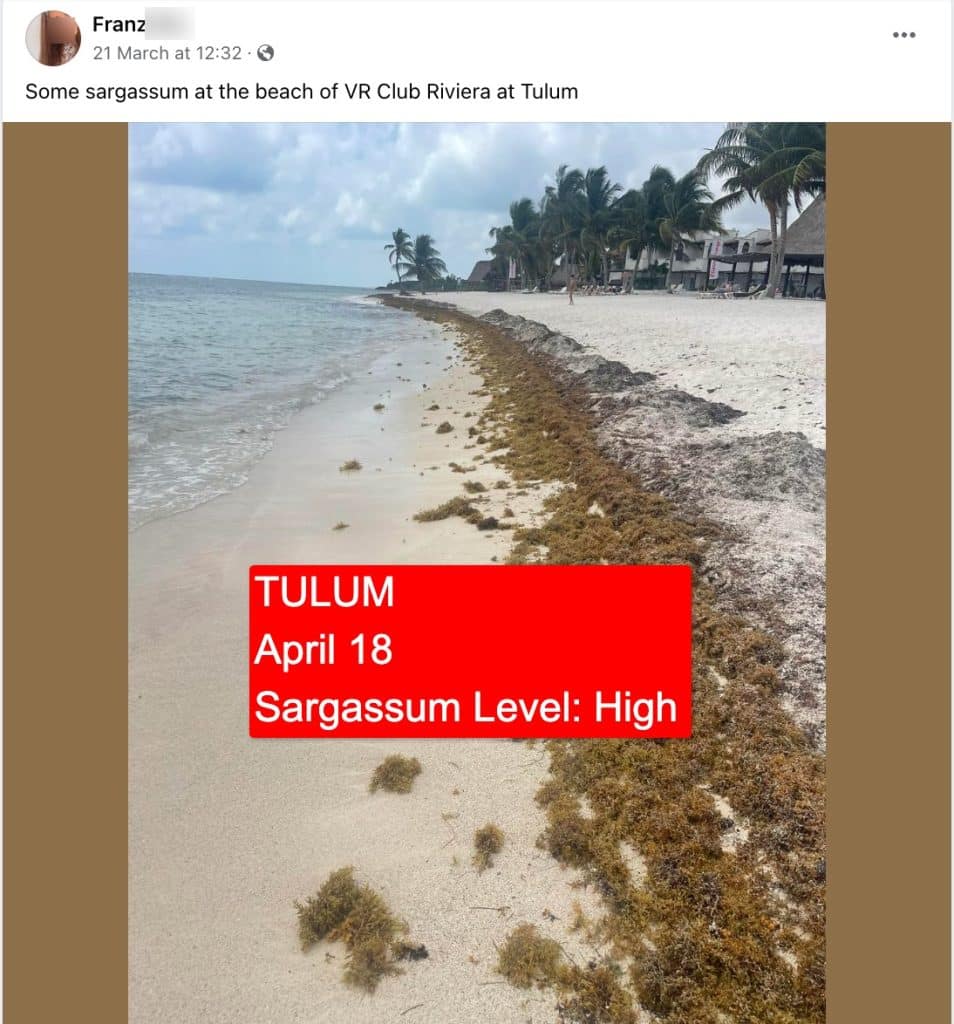
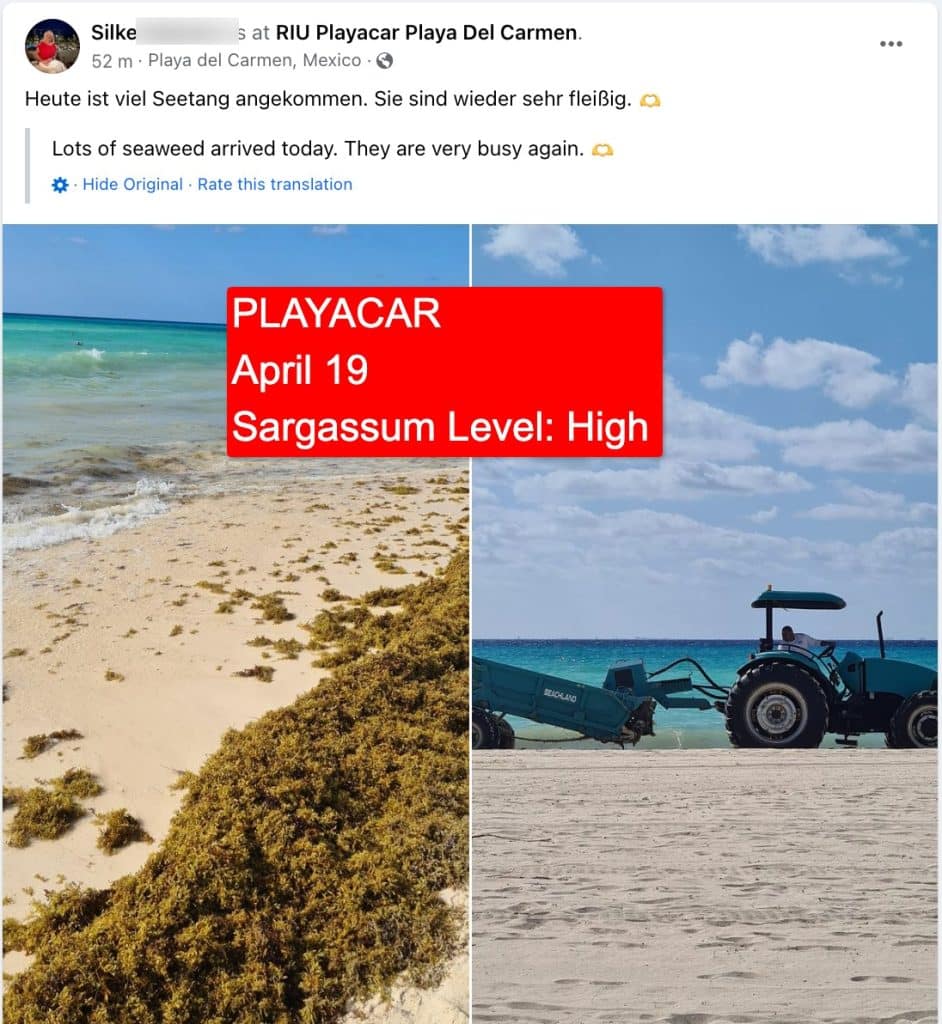
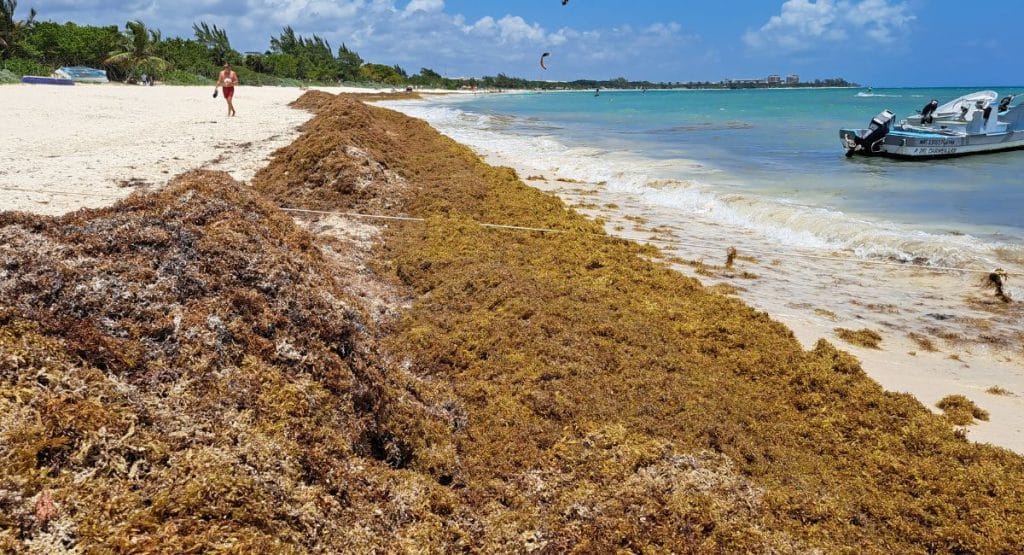
Source: Traveling Lifestyle
Video report from Puerto Morelos (by Traveling Lifestyle)
April 15 – 16
A new wave of sargassum is expected in the coming weeks
Mexican officials expect another wave of seaweed on the beaches of popular destinations such as Cancun, Playa del Carmen, Tulum, Akumal and Cozumel.
Latest photo and video updates:
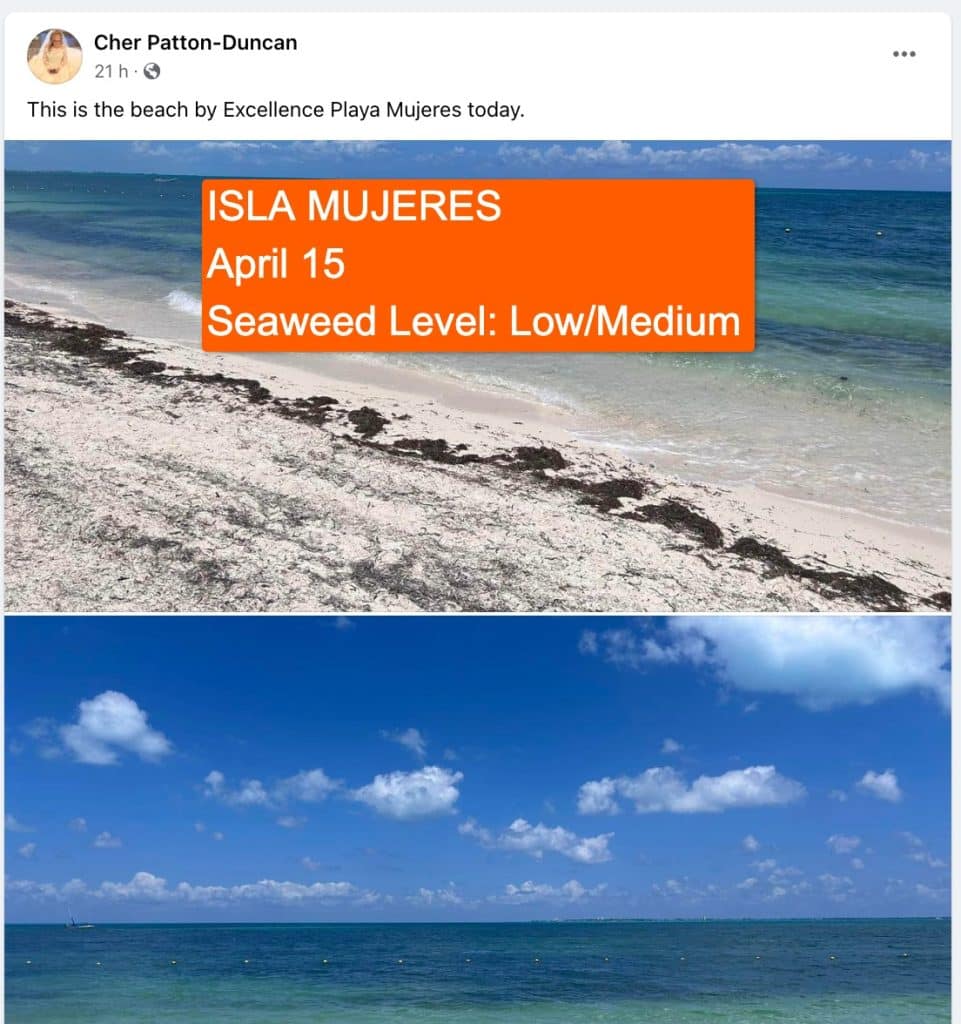
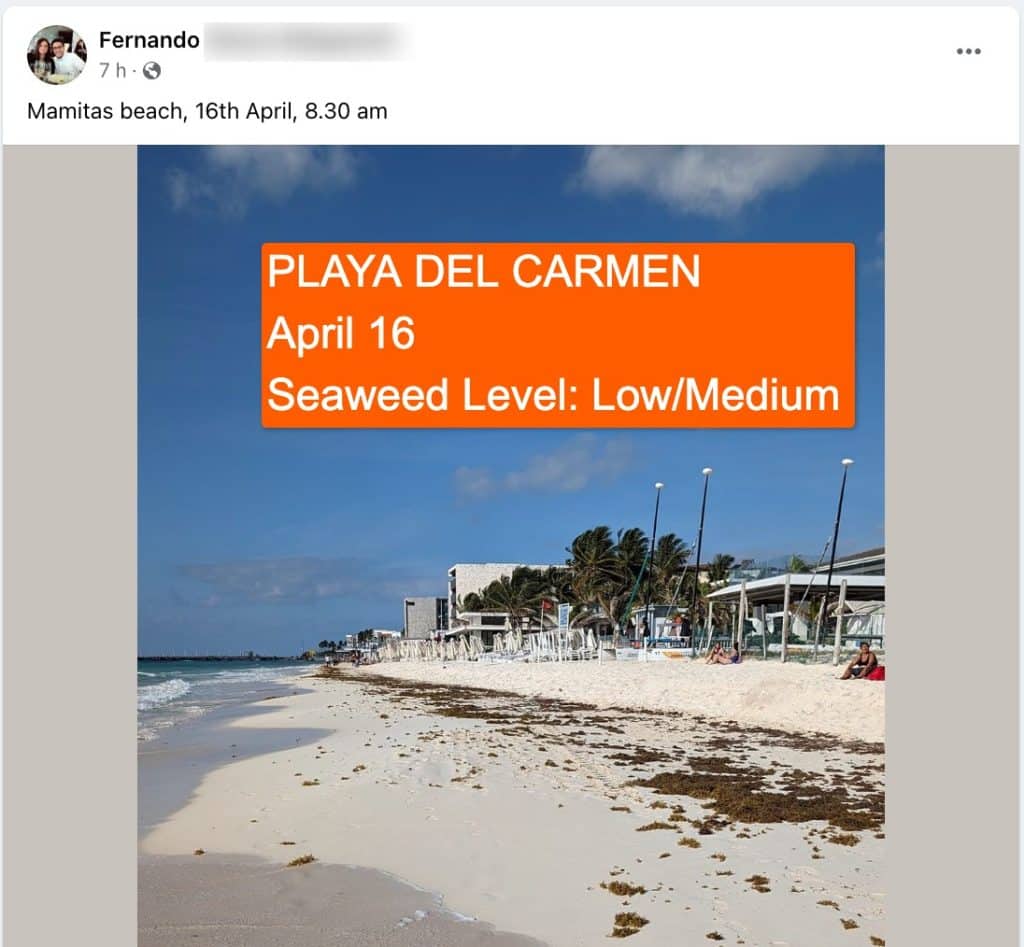
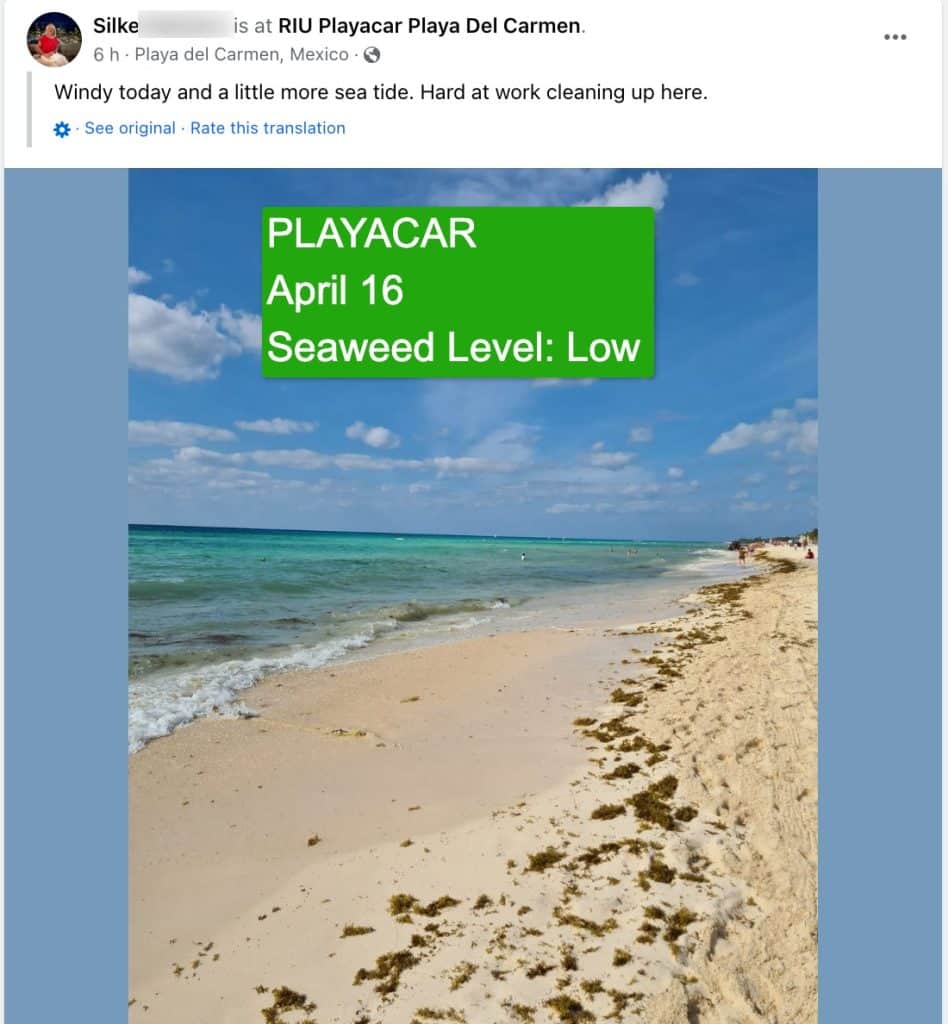
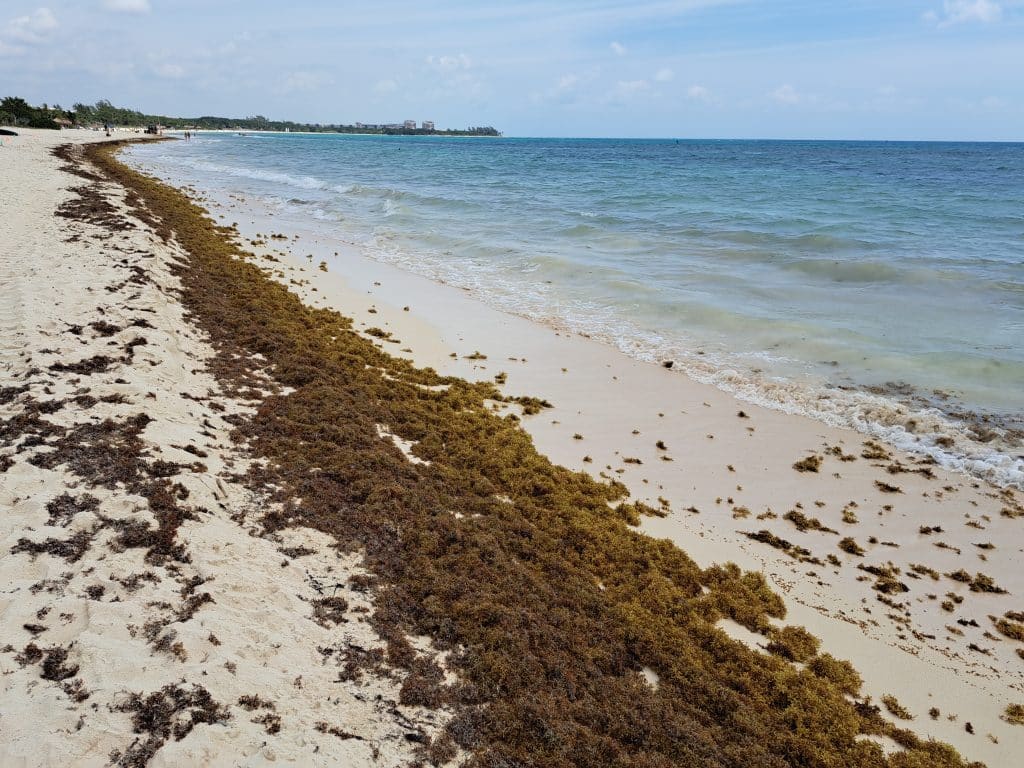
Massive arrival of seaweed in the Mexican Caribbean from April 6
Massive seaweed invasions occurred in the Mexican Caribbean. Starting April 6, people started uploading photos to our FB seaweed reporting group with huge amounts of seaweed on the beaches of Playa del Carmen, Puerto Morelos, Tulum, etc. This invasion continues throughout the week and is most likely caused by the higher temperatures in the Caribbean.
Here are some photos from our FB group (April 7 – 10):
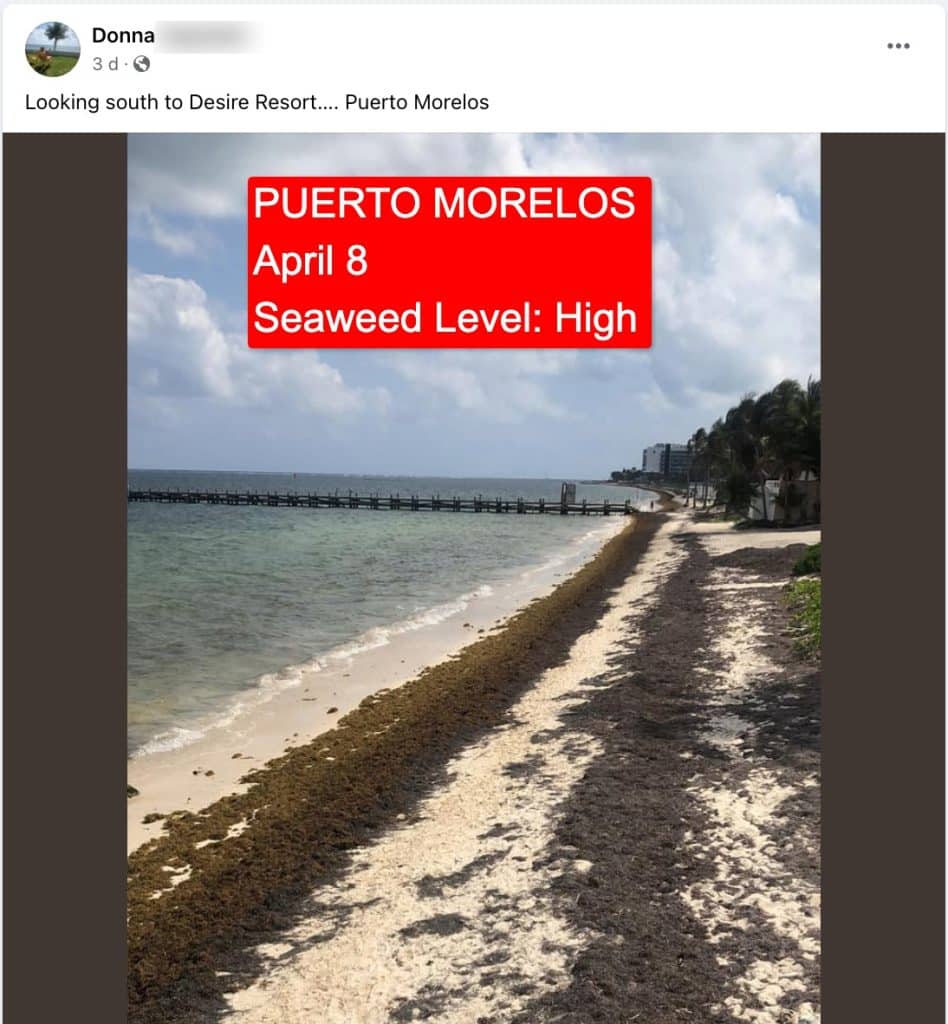
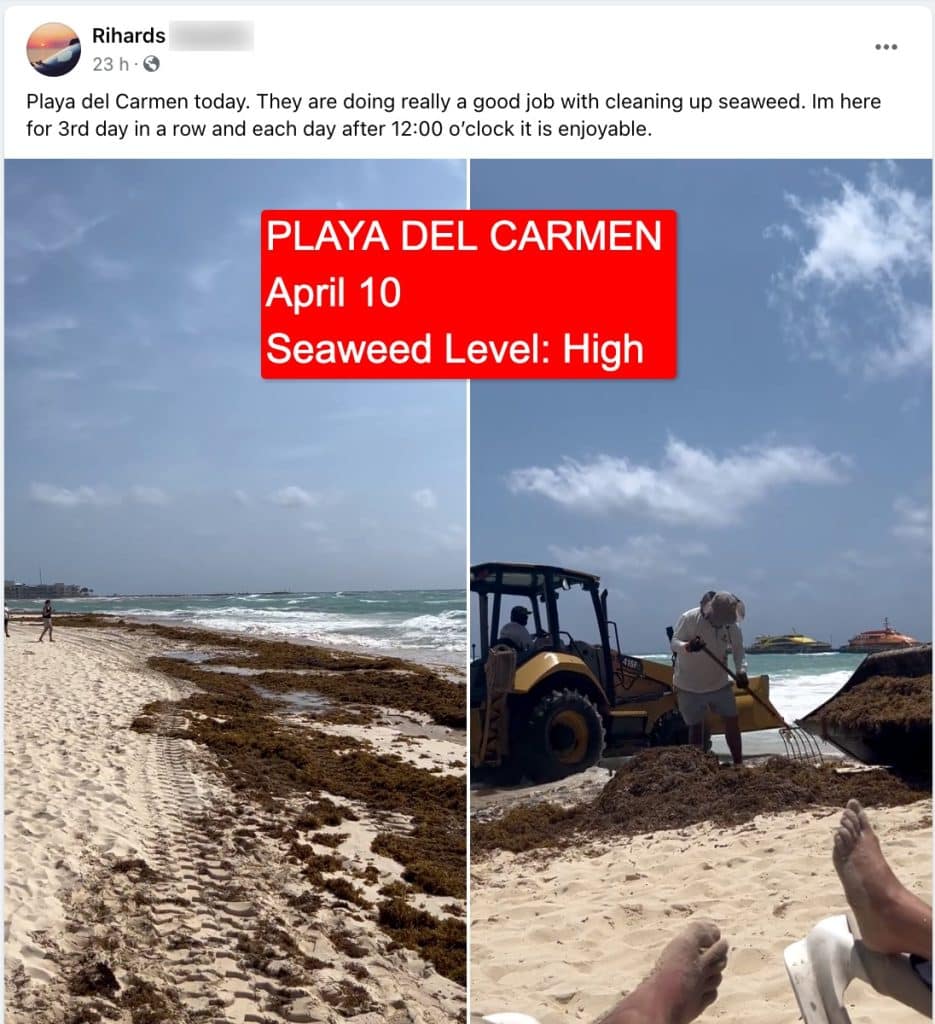
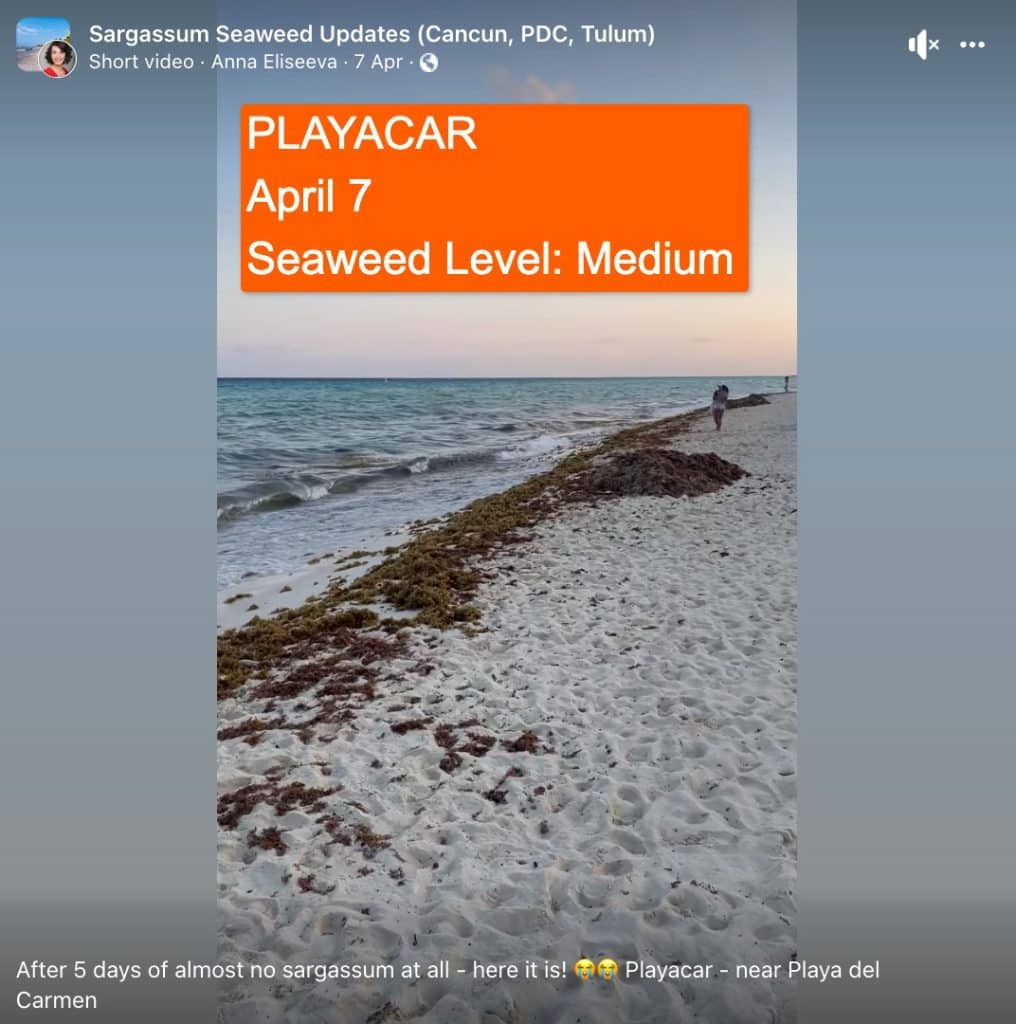
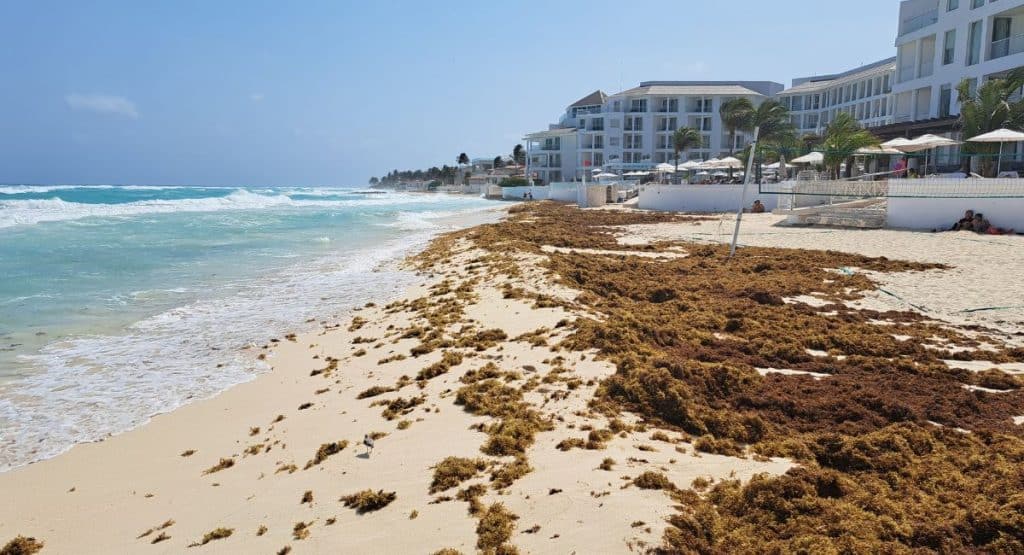
Source: Traveling Lifestyle
When does seaweed season start in Cancun (Mexican Caribbean)?
According to the data from the past two years, the seaweed season in Cancun starts in February and peaks between April and August. In some areas near Cancun, such as Playa del Carmen, Cozumel and Puerto Morelos, the peak starts as early as February.
What is seaweed sargasso and what causes it?
Sargassum is a type of brown seaweed that floats on the ocean’s surface and is known for forming large clumps or “blooms.” It is distinguished by its green appearance and air-filled bladders that aid in buoyancy.
The recent increase in sargassum blooms, especially in the Caribbean Sea and Atlantic Ocean, has been attributed to several factors, including nutrient enrichment from agricultural runoff and human waste, climate change and altered ocean currents. These factors contribute to an environment conducive to the rapid growth and accumulation of sargassum, leading to significant ecological and economic impacts on coastal areas.
